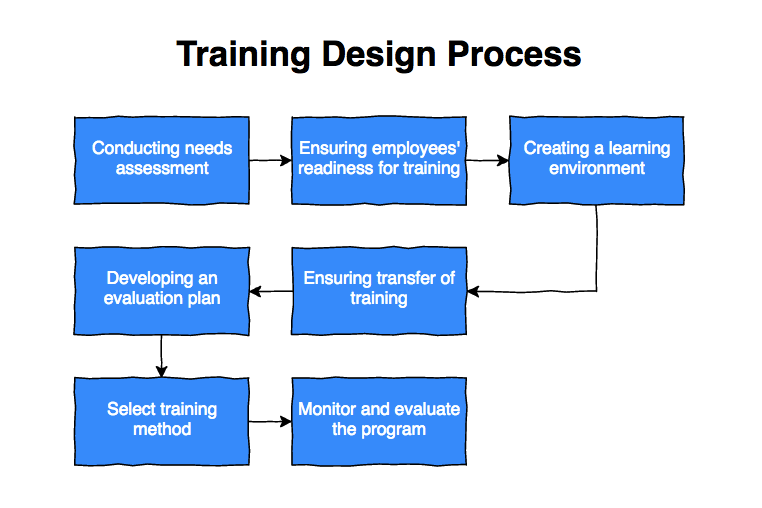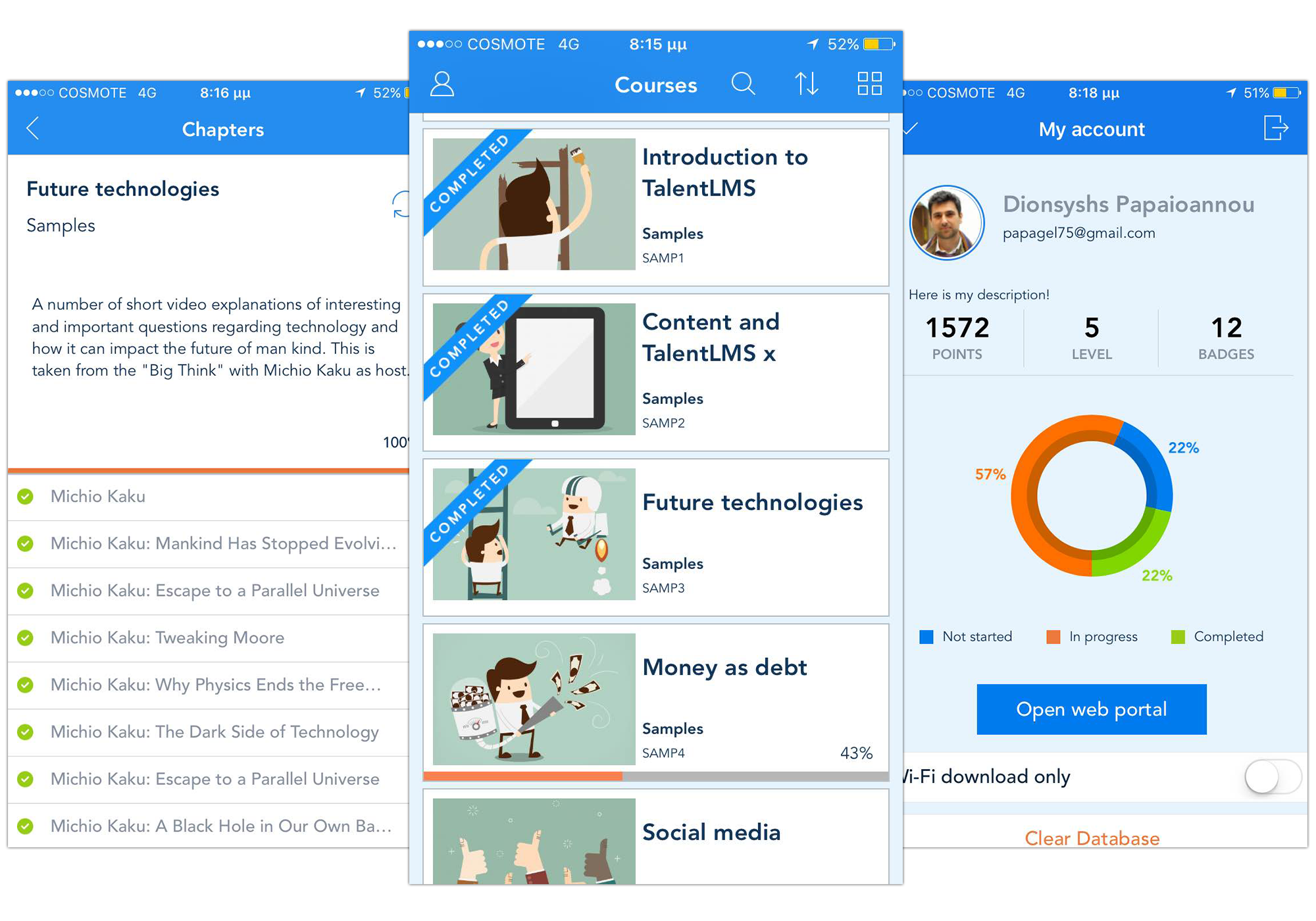Nikos Andriotis. Nikos has two decades of professional experience in education, IT and eLearning. He holds a degree in Informatics and his writing has been featured in dozens of tech industry publications. Currently, he shares tips and insights about online training and other business-related topics for TalentLMS.

Do you think you’re doing a good job with your employee training?
If you do, you’re in the minority; only 38% of organizations think their training is effective, with 62% believing they aren’t doing a good job meeting learners needs.
In today’s ultra-competitive business environment, it is always the employer with the better-trained personnel who gains the upper hand.
Well-trained, highly skilled employees are much more efficient and produce better results. This kind of efficiency and productivity is what gives an employer the much-needed competitive advantage.
Having big budgets and extensive resources is a great edge for large multinational companies mainly because they can invest heavily in staff training and development. That, however, doesn’t always have to be the case. Small to medium-sized companies can also be competitive in this aspect. It’s just a matter of organizing training and optimizing the process.
You’d be surprised at how streamlining your training process not only results in more effective learning but also gives you the biggest bang for your buck. It also saves you a lot of time and effort.
A well-organized training process, even if resources are scarce, can easily compete with those of the big multinationals.
So, if you’re up for it, here are five organizing tips to improve your training process for sure-fire results.
Engagement is the key
One of the keys to organizing training programs that work is being able to find and address your learners’ needs. Analyzing performance metrics can give you a rough idea of what those needs are currently.
Numbers, however, don’t tell the whole story. To get the facts straight from the source, you need to boost learner engagement. Do that, and you won’t just pin down their needs but also motivate and empower your learners.
The best and most effective way is to engage with your learners personally. Simply observe, interview or ask them about their pain points at work. You’d be surprised at the insight you can gain just by spending a few minutes chatting with your learners.
To make sure you’re keeping employees engaged throughout the training process, rely on a structure rather than memory. Below is a checklist you can use for sales training — feel free to adapt it for other departments in your organization, or make your own from scratch in Process Street:
Don’t forget to follow up
Following up is one of the biggest challenges when it comes to implementing and organizing training programs. Because of the workload training teams handle, things usually tend to fall off the radar. Many trainers forget to follow through with keeping learners engaged. Most of the time, after a training session, they simply move on to the next course or class and don’t look back.
Make sure to keep your learners involved even after they have completed their training. Don’t ever forget to stay in touch, beginning a few weeks after the session. While this might mean more work for you, it only takes your employees a few minutes to provide feedback (either personally or through a survey) on how their recent training has helped them so far.
By following up consistently, you can achieve two very important things. First, you get an idea of how relevant and effective your training program is from the participants’ perspective. Second, you determine whether or not their learned skills gain traction in the workplace.
Following up is essential to any well-implemented training process, especially when the time comes to evaluate your training program’s success.
You can:
- Set yourself recurring reminders with a project management or to-do list tool
- Use a learning management system to track course activity
- Use a checklist to remind you to follow up at regular intervals
- Create calendar events ahead of time to check in with trainees
Ensure an environment that promotes learning
To maximize results when organizing training processes, you need an environment that enables learning. First, make sure that you hold all training sessions in a physical space that is free from distractions – of both professional and personal nature. Moreover, make sure that it is well-lighted, well-ventilated, and spacious enough to allow for any activities that require movement.

Though important, the training venue is only one part of the equation. The most essential and challenging aspect of setting up a training environment that promotes a culture of learning is the emotional one. It must be a place where mutual respect is paramount. Also, a place where learners feel relaxed as learning through making mistakes is not only permitted but also encouraged.
Organize your course-creation workflow
To run an effective training program, you need a well-organized course-creation workflow. Organizing the course-creation process begins by creating an outline or a basic project plan. The outline doesn’t have to be too complex, it can be as simple as a table or a chart. And to make things even easier, you can consider using a workflow management tool.

Your course creation project plan should at least contain the most important parts. Usually, those are the deliverable items or content, the due dates, the current status of the deliverables, and the point-of-contact.
Before you start your course design project, don’t forget to share your plan with all the team members to let them know what to expect. From then on, you just need to follow up to make sure the plan stays on course, and everything is delivered on time.
Make your training tech-enabled
One of the best ways to organize your training program is through the use of technology.
For instance, you can streamline your training process through a learning management system. Aside from allowing you to build, upload and deliver courses – and in some cases, hold virtual classes – an advanced LMS can also automate a lot of your training team’s administrative work. It lets you focus more on your training program’s transformational potential, rather than get stuck on administrative tasks like tracking performance, generating reports, auditing course completion, etc.

By using a learning management system, you can reach out to more learners in less amount of time. Since all learning material is available to learners anytime and anywhere (depending on the set up), they can take courses or join sessions when it is most convenient. This saves both the employees and the training team the trouble of arranging classes for everybody to attend, which cost businesses a lot of productive time.
Conclusion
We hope that these five tips will prove helpful when you begin organizing your training process.
Just keep in mind to engage with your learners consistently and follow up every training session for valuable feedback. Also, don’t underestimate the value of a well-designed training environment that enables learning. Make sure to organize your sessions according to a well-structured plan and find a way to bring technology into the equation. It will help make the administrative tasks a lot quicker and more efficient.
That way, you and your team will be able to focus less on time and energy consuming work and more on the actual training.







Benjamin Brandall
Benjamin Brandall is a content marketer at Process Street.